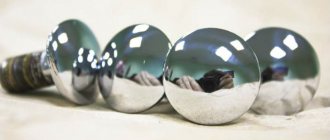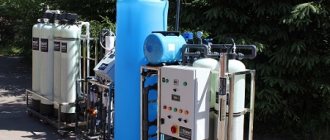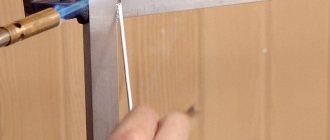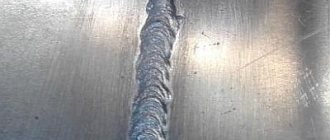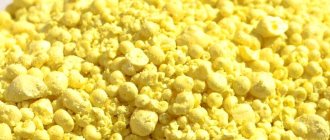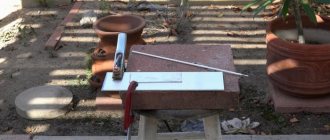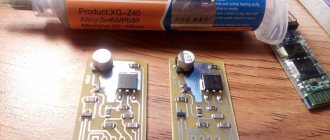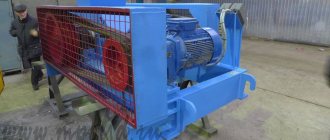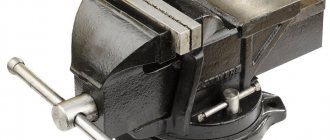Plating metal with copper at home. Electrotype
Copper plating is the process of applying a copper layer to the surface using an electroplating method.
The copper layer gives the product visual appeal, which allows the use of copper electroplating in design projects. It also gives the metal high electrical conductivity, which allows the product to be subjected to further surface treatment.
Copper plating can be used as the main process to create a surface layer, and also as an intermediate operation for the subsequent application of another metal layer. This method includes, for example, the process of silvering, chrome plating or nickel plating.
Copper plating can be done at home. This makes it possible to solve many everyday problems.
Practical application of copper plating of metals
The procedure for copper plating of aluminum and other metals has a fairly wide practical application not only in domestic use, but also on an industrial scale. On many metals, a copper coating can be applied both as a main independent layer and as a sublayer for effective adhesion of the next main coating to the base metal of the product.
In most cases, copper plating of aluminum in home workshops is carried out for the following purposes:
- decoration of jewelry;
- protection of metal parts from corrosion and cementation;
- elimination of damage and surface defects of products with complex shapes and reliefs;
- making copies of products made from various materials;
- creating contact pads for soldering aluminum without the use of an acid composition;
- preliminary preparation of the surface of parts before chrome, silver, and nickel plating.
Electroplating at home: equipment and materials
To perform copper coating yourself, you need to purchase the necessary equipment and materials for the process.
First of all, you need to prepare a source of electric current. Various home craftsmen advise using current strength, which varies over a wide range. Work must be carried out on direct current.
As a current source, you can take a KBS-L battery with a voltage of 4.5 volts or a new Krona brand battery with an operating voltage of 9 volts. You can also use a low-power rectifier instead, which produces a voltage of no more than 12 volts, or a car battery.
It is mandatory to use a rheostat to regulate the voltage and smooth exit from the process.
For the electrolyte solution, a neutral container should be prepared, for example, made of glass, as well as wide plastic dishes that are sufficiently sized to accommodate the part. Containers must withstand temperatures of at least 80°C.
You will also need anodes to ensure coverage of the entire surface of the part. They are designed to supply current to the electrolyte solution and distribute it over the entire area of the part.
To carry out electroplating at home, you will also need chemicals to prepare the solution:
- copper sulfate,
- hydrochloric or other acid,
- distilled water.
Having prepared everything you need, you can start working.
Immersion Copper Plating Equipment
To perform high-quality technological operations of aluminum copper plating, it is necessary to prepare simple equipment. The corresponding tools and materials can either be purchased at a retail chain or made independently.
To complete the work you will need the following materials and equipment:
- A 6-8 volt DC power supply with a continuously variable current control device and an ammeter. If there is no adjustment, then it is advisable to include a rheostat and an ammeter in the circuit. They will be needed to control the process. If there is no stationary power supply, then you can use a Krona type battery.
- A special bath made of material that is not subject to electrolytic effects (glass, plastic). The dimensions of the container are selected in accordance with the dimensions of the workpiece.
- Copper electrodes, which serve to supply electric current to the electrolyte during copper plating of aluminum, and also replenish the loss of metal during the reaction.
- Electrolyte, the composition of which depends on the material of the original workpiece.
Copper plating of steel products
Copper plating of steel with copper sulfate is one of the main processes in the field of electroplating because it is used to pre-plate copper. It has high adhesion to the steel surface, unlike other metals that do not have good adhesion to steel. If the technology is followed, the copper layer adheres perfectly to steel products.
There are two coating technologies: with immersing the product in an electrolyte solution and a method of non-contact coating of the surface with copper without placing it in a liquid electrolyte solution.
History of the discovery of copper
Copper is the first metal that was conquered by man and played the greatest significance in the history of the development of civilization. This event took place several thousand years BC, and the exact date of the beginning of the use of this unique metal could not be established.
In ancient times, copper nuggets were used mainly to create weapons and household tools. Red-green metal nuggets were initially used in the same way as ordinary stones. Later, through experience, people noticed that processing this material with a hammer gives it special properties. This is how cold metal forging was born.
Even later, it was discovered that the metal melts and, after cooling, takes on different shapes and properties. This stage was the initial stage in the development of hot metal forming.
What is the copper plating process?
Copper plating is the process of applying a thin layer of copper to the surface of an object. It is performed by the galvanic method, that is, by transferring copper ions from a positively charged source to a negatively charged surface to be treated. Most often, the process of electroplating copper is a preparatory step before plating with nickel and chromium, but often copper plating of metal becomes an independent type of finishing. Electroplating, which requires the creation of a copper coating, is widely used.
Safety precautions when performing work
All work with chemical reagents and an electrical source must be carried out in compliance with the necessary safety precautions.
Copper plating of aluminum in a residential area is strictly prohibited. For these purposes, it is better to use a utility room, garage or workshop. Electrical equipment must be grounded.
To protect human health, the following recommendations must be followed:
- to protect the respiratory system you need to use a respirator;
- To prevent chemicals from getting into your eyes, you must wear safety glasses;
- All work should be carried out in special clothing (rubber gloves, oilcloth apron, special shoes).
The process of coating aluminum products with a layer of copper is not particularly difficult even for a person who is little familiar with the flow of chemical reactions. Buying or manufacturing the appropriate equipment will also not cause any special problems. But many products that seem to have lost their attractive appearance will acquire a second life.
Types of copper plating
There are two options for copper plating at home:
- With immersion of the workpiece in electrolyte.
- No immersion.
With immersion of the workpiece in electrolyte. To perform the procedure, you must have a container with electrolyte of sufficient volume. After preliminary preparation, which consists of cleaning the surface with sandpaper and rinsing it in a hot soda solution, the object is connected to the negative electrode and immersed in the electrolyte for a certain time.
No immersion. Can process steel, aluminum, lead, zinc. Processing is carried out without immersion in a container; this option is usually used for large parts.
Both options are quite accessible for doing it yourself at home.
Equipment and materials required for copper plating
To carry out copper plating of steel or other metals, you will have to stock up on some materials and devices. You will need:
- Hydrochloric acid.
- Copper sulfate (copper sulfate).
- Distilled water.
- A DC source, preferably with an adjustable voltage (LATR is one option), but a regular 6-12 V transformer will do.
- Container for electrolyte (optimally a glass reservoir).
- Two copper plates that can fit freely into the container.
- Connecting wires.
An electrolyte must be made from water, copper sulfate and hydrochloric acid. First, copper sulfate is added to the water until a saturated solution is obtained. It must be thoroughly mixed so that no solid particles remain. Then hydrochloric acid is added to the solution in a thin stream (not vice versa!). In total, to apply the coating you will need:
- Water - 980 g.
- Copper sulfate - 190 g.
- Sulfuric acid - 40 g.
Now everything is ready, you can start copper plating at home.
Attention! It is necessary to take into account that hydrochloric acid is a chemically active reagent, so you should stock up on protective equipment - gloves, goggles, and prepare the workplace as much as possible.
- It is necessary to remove a thin film of oxides from the surface of the part to be processed. Sandpaper, wire brush or other abrasive materials are used. It is necessary to act very carefully, since severe damage to the metal will remain noticeable. Ideally, the surface should be polished.
- Then the product is thoroughly washed in a hot solution of soda ash. This action allows you to degrease the surface.
- The prepared product is connected to the negative electrode from the power source and placed in an electrolyte solution.
- Copper plates with a positive electrode from the power source (anode) attached to them are lowered into the electrolyte solution. It is necessary to ensure that the anode and cathode do not touch. Ideally, the distance between them should be the same in all areas, but in practice this is difficult to achieve.
- Copper plating of metal is carried out in several stages. It is recommended to remove the first layer of coating, obtained within a few minutes, and rinse the part again in a soda solution. This will strengthen the adhesion of the copper plating layer to the base metal. The part is kept in the solution for about 20–30 minutes. The thickness of the coating layer can reach 300 microns.
It is often necessary to remove the coating layer from chrome parts. To do this, a negative charge is applied to the part, and a cloth soaked in a solution of sulfuric acid (5%) is wrapped around the positive electrode. The surface of the part is wiped with it, the chrome plating layer is removed. When performing the procedure, it is necessary to protect the skin, vision and respiratory organs from acid vapors.
Copper plating of parts without immersion in solution
Galvanic copper plating can be performed without immersing the part in a container with electrolyte. To do this, you need to connect a negative electrode to it. A stranded copper wire is taken as a positive contact, the end of which is removed from the insulation by 1–2 cm and kneaded so that it looks like a brush.
To apply a layer of copper coating, the “brush” is dipped in electrolyte, then its end is passed along the surface of the part, without touching it, but trying to ensure that there is a layer between them. Constantly dipping the anode into the electrolyte, cover the entire surface with a layer of copper. The procedure requires skill and time, but the result is worth it.
Electrotype
Copper plating can be done on more than just metal objects. Electroplating is widespread, when copper plating is performed on various dried plants, insects and other non-metallic objects.
The coating technology differs little from the usual one, only at the beginning of the process it is necessary to apply an electrically conductive varnish to the surface. After the varnish coating has dried, the usual steps are to apply a layer of copper. The resulting products have high decorative or artistic qualities and are highly appreciated by viewers.
Related video: How to make copper plating with your own hands at home
My name is Pavel, I live in the village, I create various products in the steampunk and post-apocalypse style, and in my free time I build a custom Niva and chopper.
I decided to try the electrochemical method of applying non-ferrous metals, this is my first experience. As a test subject I used a couple of aluminum parts from one of my new creations.
The source of information for me was YouTube and a couple of specialized forums. Of course this recipe is not perfect. the application methods were also not ideal. I did it, so to speak, “collective farm style,” to see what would happen. But I’m happy with the result, you can work according to my scheme.
Here is a list of what you will need: - distilled water - copper sulfate (I used ordinary garden sulfate) - gelatin - electrolyte for the battery - charging from a mobile phone 5 volts / 800-100 miliamps - a sacrificial piece of copper or copper foil - a container where electrolysis will take place (I stupidly used a 2L lemonade bottle) -measuring cup -precision scales
Process: 1) Prepare an electrolytic solution. To do this, heat it in a saucepan and keep it hot for about half a liter of distilled water. Measure out 200 ml of water and dissolve 100 g of copper sulfate in it, mix thoroughly. Next, measure out 1 g of regular edible gelatin on a scale, dilute it with hot distilled water in a small amount, and mix thoroughly. Pour the resulting gelatin solution into a jar with vitriol solution. Now add electrolyte for the battery to the resulting bodyagu, so that the total volume of the entire solution is 500 ml. That's it, the solution is ready. 2) Prepare a bath for the electrolyte, connect the wires to the part and to the sacrificial piece of copper. On the mobile phone charger, we cut off the charging plug, attach the minus to the part that needs to be copper plated, and attach the plus to the sacrificial piece of copper. How to understand where is the plus and where is the minus on charging if you don’t have a multimeter at hand? Elementary. Place the ends of the charger into a glass of plain water without touching each other, and plug the charger into a power outlet. At the minus end there will be bubbles. and where plus nothing will happen. 3) Pour the solution into the electrolysis container. 4) Clean the aluminum part before electrolysis. This is necessary to remove the aluminum oxide film, oxide, from the surface of the part. You can use any strong acid, I used orthophosphoric acid, I didn’t even heat it. Pipe cleaners can also be used for this. The reaction will be immediately visible, the surface of the aluminum will begin to “hiss.” 5) We lower the part, a sacrificial piece of aluminum, into the bath. They should not touch each other, otherwise we will burn the power supply. Fill in the electrolyte, plug in the charger and leave for about two hours. 6) At the end of the process, wash the part and polish it. Basically everything.
The correct formula for the process is as follows: Electrolyte composition and electrolysis mode for direct copper plating of aluminum (without applying intermediate layers): CuSO4•5H2O - 50 g/l Na4P2O7•10H2O - 220 g/l NaH2PO4•2H2O - 15 g/l NaNO2 - 15 g/l l
ik — 60 A/m2 t — 60 °C pH — 7.5
I have attached a few photos, I think everything is clear on them. The result is in the very last photo. Adhesion is strong and holds very tightly. Have a nice weekend everyone :)
Kinetics of the galvanic copper plating process.
A large number of electrolytes have been developed for the electrolytic deposition of copper, which are usually divided into two groups: acidic and alkaline. There are both simple and quite complex compositions for copper plating.
Cathode polarization curves for some of them are shown in Figure 1.
Figure 1 - Cathode polarization curves during copper plating from electrolytes: 1 - sulfate; 2 - pyrophosphate; 3 - cyanide; 4-cyanide with a high content of free cyanides.
2.1 Processes in acidic copper plating electrolytes.
Acidic electrolytes include sulfate and fluoroborate electrolytes. Their main advantages are simplicity of composition and stability in operation, but they have low dissipative ability. It is also impossible to directly copper-plate steel from them due to the loss of contact copper, and, consequently, poor adhesion of the copper layer to the steel. As a result, copper plating is carried out after preliminary deposition of a copper layer (3-4 microns) from alkaline electrolytes or after deposition of a nickel layer (3-5 microns).
Of the acidic electrolytes, the most common is sulfate electrolyte. The main components of sulfate electrolytes are copper sulfate and sulfuric acid. The electrical conductivity of neutral solutions of copper sulfate is low, so sulfuric acid is added to them, which significantly increases the electrical conductivity of solutions at stirring temperature.
It is assumed that the discharge of divalent copper ions at the cathode occurs in two stages:
Cu2++ e → Cu+
Cu+ + e → Cu
The slow stage is the first reaction. The share of each stage in the overall kinetics of copper plating depends on the composition of the electrolyte and the electrolysis mode: current density, temperature, stirring.
The current efficiency of copper is about 100%, since hydrogen evolution does not occur at the cathode, since the copper evolution potentials have more positive values than the hydrogen evolution potentials.
Increasing the acidity of the electrolyte helps to reduce the solubility of copper sulfate, which leads to a decrease in the upper limit of the permissible current density. To increase the concentration of copper ions in the cathode layer, stirring is used. In this case, the acidity of electrolytes can be increased. The more intense the stirring, the higher the sulfuric acid content may be. An increase in temperature helps to increase the solubility of copper sulfate: at 25 °C - 23.05 g of CuSO4 per 100 g of water; at 100 °C - 73.6 g. Increased acidity contributes to the production of more finely crystalline sediments.
Near the anodes, along with Cu2+ ions, the solution may contain small amounts of monovalent copper ions, which are formed as a result of the reaction:
Cu + Cu2+↔ 2Cu+
When Cu+ ions accumulate in the solution, the equilibrium will shift to the left, and metallic copper will precipitate.
If the acidity of the solution is insufficient, cuprous sulfate will hydrolyze to form Cu(OH)2 or CuO2
Cu2SO4 + H2O ↔ Cu2O + H2SO4
As a result, the electrolyte will contain suspended particles of metallic copper and copper oxide, which, when included in the cathode deposit, make it dark, rough, and sometimes friable.
The presence of sulfuric acid promotes the oxidation reactions of monovalent copper:
Cu2SO4 + H2SO4 + 1/2O2→ 2CuSO4 + H2O Cu2O + 2H2SO4 + 1/2O2→ 2CuSO4 + 2H2O
Thus, sulfuric acid is primarily needed to prevent the accumulation of Cu+ ions and the hydrolysis of its salts.
Surfactants are sometimes added to copper sulfate electrolytes. These substances are introduced to increase cathodic polarization, which contributes to the production of finer-grained, dense, sometimes shiny, deposits. The beneficial effect of these additives is that they prevent the formation of build-ups on the edges and protruding parts of parts. The best additives are dextrin (no more than 1 g/l) and phenol or its sulfo compounds (1-10 g/l).
To obtain shiny copper coatings, a large number of shine-forming additives have been proposed, providing a mirror-like shine to the coatings, giving them ductility and reducing internal stresses.
When working with electrolytes to obtain shiny copper coatings, special attention must be paid to the anodes. The anodic process of copper dissolution is quite complex and is described in detail in the article.
Suspended sludge particles are usually the cause of coarse, rough sediment. In general, copper coating is especially prone to dendrite formation during copper plating in violation of the technological process, which includes the presence of sludge in the solution. In this case, the sludge particles become centers of crystallization and the current, instead of going to the nucleation of new copper grains, is spent on the fouling and growth of these particles. Dendrites can also appear for other reasons, one of which is also exceeding the permissible current density on protruding parts of parts. Examples of dendrites on a copper coating are shown in Figure 2. An example of a dendrite on a cylindrical cathode and a cross-section of such a dendrite are shown in Figure 3.
Figure 2 - Examples of dendrites on a copper coating.
Figure 3 - An example of a dendrite on a cylindrical cathode and a cross-section of such a dendrite.
The quality of the resulting shiny coatings is greatly influenced by the concentration of Cl- ions. At a reduced concentration, the gloss of the coatings decreases and burns form on the sharp edges of parts; at an increased content, stripes form on the coatings.
Harmful impurities in copper sulfate electrolytes are arsenic, antimony, some organic substances that form colloidal solutions, and anode sludge.
In addition to sulfate electrolytes, fluoroborate electrolytes are used. These electrolytes are highly stable; the resulting coatings are dense and finely crystalline, the dissipating ability of electrolytes is approximately the same as that of sulfate ones. The high solubility of copper fluoroborate allows the use of increased current densities. It is impossible to directly copper-plate steel parts from these electrolytes; a sublayer of nickel or copper from cyanide electrolytes is required.
2.2 Processes in alkaline copper plating electrolytes.
Alkaline electrolytes include cyanide, pyrophosphate and ethylenediamine electrolytes. Main advantages: high dissipative ability, production of fine-crystalline deposits, the ability to directly copper-plate steel parts.
2.2.1 Cyanide copper plating.
Cyanide electrolytes are quite common. The conditions for copper deposition from cyanide electrolytes differ significantly from the conditions for deposition in acidic electrolytes.
In cyanide electrolytes, copper is part of complex ions; the degree of dissociation, and, consequently, the activity of copper ions is very low. Therefore, the potential for copper release in them is approximately 0.9-1.2 V more negative than in sulfate solutions.
When the amount of cyanide is low, the anodes are passivated. If there is insufficient amount of free cyanide, when passivation of the anodes occurs and OH- ions are discharged onto them with the release of oxygen, then not all of the resulting oxygen is released in the form of a gas, but part of it is spent on the oxidation of cyanide into cyanite. A decrease in cyanide content also occurs due to their interaction with atmospheric carbon dioxide and the formation of carbonates (NaCN → Na2CO3).
The content of free cyanide has an opposite effect on the cathodic and anodic processes: the cathodic process requires a minimum cyanide content, and the anodic process requires a maximum. With a lack of free KCN, a greenish film of CuCN forms on the anodes due to the fact that copper ions are not able to form a complex compound. The free surface of the anode decreases, the current density increases, and anodic dissolution occurs with the formation of divalent copper ions, which are deposited on the anode in the form of an insoluble hydrate. In this case, the anodes are passivated and intense oxygen release is observed.
The main components of copper cyanide electrolytes are complex copper cyanide and free sodium cyanide. From the data presented it is clear that the degree of dissociation of complex ions is very small and decreases with increasing CN- content in the complex. This apparently explains the increase in cathodic polarization with increasing content of free cyanide in the electrolyte.
The copper content in the electrolyte usually decreases during operation due to insufficient solubility of the anodes. A decrease in the concentration of copper ions in electrolytes leads to the formation of porous deposits. In addition, when working with low-concentration copper electrolytes, only reduced current densities can be used.
Carbonate is a constant component of cyanide electrolytes. It accumulates as a result of cyanide oxidation by atmospheric oxygen, especially when heated:
2NaCN + 2H2O + 2NaOH + O2 = 2Na2CO3 + 2NH3
The presence of carbonates in small quantities is beneficial because it increases the electrical conductivity of electrolytes. However, when their accumulation exceeds 70 g/l, and in concentrated cases - up to 140 g/l, the anodes tend to passivate, and the coatings become porous. Carbonates can be removed using barium chloride and freezing, cooling the electrolyte to -5 °C. It should be noted that sodium carbonates precipitate more easily than potassium carbonates. Sulfates do not have a significant effect on the electrolysis process.
The introduction of depassivators into the electrolyte, which include Rochelle salt KNaC4H4O6•4H2O and potassium thiocyanate KCNS, makes it possible to increase the operating current density and eliminate passivation of the anodes, but at the same time the temperature of the electrolyte should be increased.
Highly copper-concentrated electrolytes containing depassivators allow the use of high current densities (up to 10 A/dm2) at elevated temperatures and stirring. In this case, it is possible to obtain a current efficiency close to 100%.
Sulfides introduced into the electrolyte play the role of a reducing agent, preventing the accumulation of Cu2+ copper ions in the bath.
To replace toxic cyanide electrolytes, pyrophosphate and ethylenediamine electrolytes are used.
Use of copper
Due to its numerous advantages, this metal has become widespread. Today, copper and its numerous alloys are widely used in industry. The metal is relevant for aircraft manufacturing, automotive manufacturing, instrument making and other industries. Metal and products made from it are no less popular in the domestic sphere. Copper plating itself is one of the best ways to coat a metal surface with a thin layer. At home, copper plating can be done in several ways.
Physical properties
The main quality of copper is low resistivity and, as a result, high electrical conductivity. An increase in impurities of various metals in a copper alloy significantly reduces the electrical conductivity of the material.
The high thermal conductivity of pure copper is significantly reduced when various alloying substances are added to its composition.
Also often used in industry are copper products that are highly resistant to corrosion in various environments, except organic acids, ammonia and ammonium salts. An increase in the amount of impurities in the copper composition leads to a significant decrease in the corrosion resistance of the alloys.
Galvanic copper plating at home
For this you will need:
- Copper sulfate;
- Water;
- Hydrochloric acid in its pure form.
Galvanic copper plating at home
Preparation of the solution
We make a saturated solution of copper sulfate, after which you will need to add 1/3 of this solution to hydrochloric acid. After preparing the copper sulfate solution, it should be thoroughly stirred so that there are no particles. Next, you need to add hydrochloric acid in a thin stream to this solution. Don't forget about safety precautions and use gloves and safety glasses. After you have added hydrochloric acid to the solution, it should be mixed thoroughly.
So, the solution is ready and you can start copper plating at home. To do this, you need to take the metal part on which you are going to apply a layer of copper and prepare it for work. Preparation includes sanding it with sandpaper. This procedure allows you to not only clean the metal surface, but also degrease it. The same procedure will be relevant for parts made of brass or lead. After this, the coating must be thoroughly washed in a solution of soda ash. This will allow the material to be degreased more thoroughly.
Soda ash for degreasing material
Next, the surface must be immersed in a solution of copper sulfate and hydrochloric acid. Please note that the first layer of copper is very thin and weak, so it is advisable to remove it with a wire brush. After you have done this, the surface of the steel or lead should be washed again in a solution of soda ash and again immersed in the copper plating solution. These manipulations will lead to the fact that the layer of copper on the surface at home will be much thicker and much stronger, since it can be removed from the object only using sandpaper, and not a metal brush as before.
This method allows you to make a very high-quality copper coating that can only be removed with sandpaper. To improve the copper coating at home, the part should be immersed in the solution again. This method is distinguished by its simplicity and high efficiency, including for lead products.
Copper plating procedure
Copper plating is usually called the procedure for galvanic deposition of copper; the thickness of the copper layer in such cases can be from 300 microns or more. Copper plating of steel is one of the most important processes in electroplating, as it is used as an additional process before applying other metals for chrome plating, nickel plating, and silver plating.
The copper layer adheres perfectly to the steel and is able to smooth out various defects on the surface.
Copper coatings are characterized by high adhesion to other surfaces, lead products, especially metal ones, as well as high electrical conductivity and ductility. The newly applied coating has a bright pink matte or shiny color. Under the influence of atmospheric influences, copper coatings can oxidize and become covered with a coating of oxides with various rainbow-colored spots.
Characteristics and composition of copper
Copper is a heavy metal with a rose-red color, which is highly soft and melts at a temperature of more than 1080℃. The electrical conductivity of copper coating is 1.7 times higher than that of aluminum. Copper also has high thermal conductivity.
Many specific properties of the metal are due to the presence of various impurities in its composition. So, according to the oxygen that copper contains, the metal is divided as follows:
- copper without oxygen contains impurities of less than 0.001%;
- refined copper contains oxygen 0.001–0.01%;
- pure copper contains oxygen about 0.03–0.05%;
- General purpose copper contains 0.05–0.08% oxygen.
The presence of lead or bismuth in copper reduces the plasticity properties of the material. Slightly soluble impurities (sulfur, lead, bismuth) increase the fragility of the metal.
During the electrolysis process, in addition to oxygen, hydrogen can enter the composition of copper alloys.
Areas of use of copper plating
Generally, electroplating copper plating can be used:
- For decorative purposes. Given the enormous popularity of antique copper products these days. There are methods of artificial aging of steel products;
- In galvanoplasty. Widely used in jewelry, among souvenirs, for making bas-reliefs, etc.;
- In the technical industry. Copper plating of metal is very important in the electrical field. The low cost of copper plating compared to gold or silver coatings makes it possible to reduce the cost of manufacturing electrodes, electrical busbars, contacts and other elements from lead steel.
Copper plating occurs together with the application of other galvanic coatings
- If you need to apply a multi-layer protective and decorative coating to a layer of steel. In the vast majority of cases, copper is used here together with nickel and chromium. This allows you to improve adhesion to the base metal and obtain a shiny, high-strength coating;
- To avoid cementation of the area. Copper plating of lead will prevent carbonization from occurring on steel areas. To apply the copper layer, use only those areas where cutting will be carried out;
- When performing restoration and restoration work. This method is most often used to restore chrome parts of cars and motorcycles. For these purposes, a fairly thick layer of copper is applied, about 100-250 microns or more, which makes it possible to cover all defects and damage to the metal for applying subsequent coatings;
Types of copper plating
- Using electrolyte immersion;
- Without immersion in electrolyte.
The first method involves treating a metal product with sandpaper, a brush and rinsing with water. After which degreasing in a hot soda solution with repeated rinsing. Next, two copper plates – anodes – are lowered into a glass container on copper wires. The part is suspended on a wire between the plates, after which the current is started.
The second method is relevant for products made of steel, aluminum and zinc.
Home copper plating
This procedure is relevant for various cases, since applying a layer of copper can be used for aluminum cutlery, souvenirs, candlesticks, etc. Non-metal products on which a layer of copper has been applied have a unique effect. These can be plant stems, leaves, etc. Due to the fact that the objects being coated do not have a conductive layer, a special electrically conductive varnish is used instead, which is applied to the surface.
The varnish contains a number of organic solvents, foaming agents and finely dispersed graphite powder, which creates electrical conductivity. The varnish is applied in a thin layer to a dry surface, and after drying in an hour, you can begin copper plating. If desired, copper can be given different color shades using special methods. The high quality and uniqueness of such products is deservedly equated to real jewelry.

